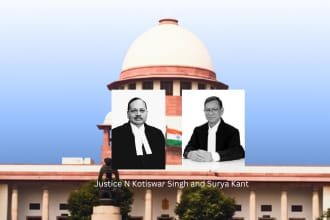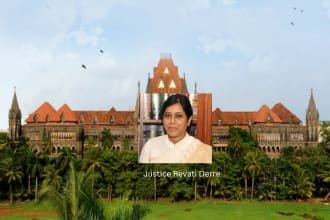In a significant development in the ongoing Uphaar cinema fire tragedy case, the Supreme Court of India on May 7, 2025, sought a detailed response from the Government of the National Capital Territory of Delhi regarding the prolonged delay in constructing a trauma centre in memory of the 59 victims who lost their lives in the tragic incident. The bench, comprising Justice Surya Kant and Justice N Kotishwar Singh, also issued notices to the Ansal brothers and the Central Bureau of Investigation (CBI), seeking clarity and accountability after nearly a decade of inaction.
Background: Uphaar Cinema Fire Tragedy
The Uphaar cinema tragedy occurred on June 13, 1997, during the screening of the Hindi film Border, when a fire broke out in the theatre located in South Delhi’s Green Park area. Due to gross safety lapses, including blocked exits and lack of emergency preparedness, 59 people died of asphyxiation, and over 100 others were injured.
The incident, one of the worst fire disasters in Indian urban history, led to a long legal battle that exposed the dark underbelly of negligence, regulatory lapses, and slow judicial proceedings. Cinema owners and real estate barons Sushil Ansal and Gopal Ansal were eventually held responsible for criminal negligence.
Legal Journey and Supreme Court Directives
In March 2014, a Division Bench of the Supreme Court comprising Justices TS Thakur and Gyan Sudha Misra held the Ansal brothers guilty of culpable homicide not amounting to murder. Justice Thakur sentenced them to one year of imprisonment. However, Justice Gyan Sudha Misra enhanced the sentence to two years with a caveat — the sentence could be waived upon payment of ₹50 crore each. The difference of opinion on sentencing led to the matter being referred to a three-judge bench.
Eventually, in August 2015, the Supreme Court decided that the Ansals would not serve any additional jail time. Instead, they were directed to deposit ₹30 crore each (₹60 crore total) with the Delhi government to fund the construction of a state-of-the-art trauma centre in memory of the victims. The Court had set a clear timeline — the trauma centre was to be constructed within two years.
Delay in Implementation and AVUT’s Plea
Ten years on, the trauma centre remains unbuilt. The Association of Victims of Uphaar Tragedy (AVUT), led by Neelam Krishnamoorthy, recently approached the Supreme Court seeking enforcement of its 2015 order. AVUT pointed out that although the Ansal brothers deposited the required amount with the Delhi government in November 2015, there has been little to no progress in initiating construction at the designated Dwarka site.
AVUT submitted that the government has failed to honour the commitment made to the Court and to the victims’ families, effectively rendering the Court’s order meaningless.
Supreme Court’s May 2025 Hearing
On May 7, 2025, taking note of the serious lapse, the Supreme Court bench directed that the Chief Secretary of the Delhi government be impleaded as a party in the case. Notices were also issued to the CBI and the Ansal brothers.
The Court expressed its concern over the sheer inaction and sought a detailed affidavit from the Delhi government on the status of the trauma centre project. The matter has been listed for further hearing on July 16, 2025.
Legal Representation
Advocates Diksha Rai, Atiga Singh, Piyush Vyas, and Purvat Wali appeared on behalf of AVUT. The legal team emphasized the moral and legal obligation of the state to comply with the Supreme Court’s binding directives and ensure timely justice, not just through conviction, but also through memorializing the victims.
The Trauma Centre: A Symbol of Accountability
The trauma centre was envisioned not only as a medical facility but also as a symbol of accountability, civic safety, and a tribute to the 59 lives lost in a preventable tragedy. Its prolonged non-construction, despite the availability of funds, showcases systemic apathy and bureaucratic inefficiency.
Given the magnitude of the tragedy and the public sentiments involved, the delay reflects poorly on both the government machinery and the legal enforcement mechanisms. AVUT’s perseverance highlights the importance of civil society in holding institutions accountable, especially in cases involving public tragedies.
Broader Implications and Public Interest
This case carries significant public interest implications. It raises critical questions:
- Can monetary penalties substitute for actual justice?
- What happens when court-directed funds are mismanaged or unutilized?
- Who holds the government accountable when it fails to implement judicial orders?
The Supreme Court’s proactive stance in seeking a status report from the Delhi government is a welcome move, indicating judicial awareness of public dissatisfaction over non-implementation of key directives. If followed through strictly, this could set a precedent for stricter monitoring of fund utilisation in court-directed restitution measures.
Conclusion
The Uphaar cinema tragedy remains a grim reminder of the consequences of negligence and the slow wheels of justice. With the Supreme Court once again intervening to enforce its 2015 directive, there is a renewed sense of urgency and hope among the victims’ families. As the July 16 hearing approaches, all eyes will be on the Delhi government’s response and the judiciary’s next move.
Justice delayed must not be justice denied — especially when the delay affects not only the memory of victims but also undermines faith in the justice system. The trauma centre, long overdue, must be built without further excuses or bureaucratic hurdles.



